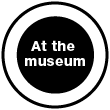|
 The Interpretive Brain The Interpretive Brain
One of the functions of the brain is to identify objects and figures. To help us understand what we see, the brain uses the knowledge stored in its memory to identify objects and figures that have meaning for it.
Linking sensation and memory
When there are several possible ways of interpreting information transmitted by the senses, the brain tends to rely on its experience, and it chooses the most reasonable possibility. When information from the senses is incomplete or distorted, the brain often fills in what's missing - according to its interpretation, of course. But sometimes the brain's attempts to find logic in a picture end up confusing us, leading us to see things that aren't really there.
When the fix-it job fails
The brain also relies on its experience to determine the characteristics of objects or images - their weight, size, distance, etc. It has learned that it must "fix" the information it receives from the sense organs with the help of its stored knowledge and hints from the environment. Many illusions are created when these hints "fool" the brain, and it fixes the information it receives incorrectly.
Wait, that's impossible!
Some illusions are pictures of objects that could never really exist. These illusions confuse the brain because they conflict with what it knows from experience. The brain's strong tendency to see what it recognizes sometimes gives us the mistaken impression that "nothing's wrong" - even though there something very wrong in that picture we're looking at.
|





 The Interpretive Brain
The Interpretive Brain